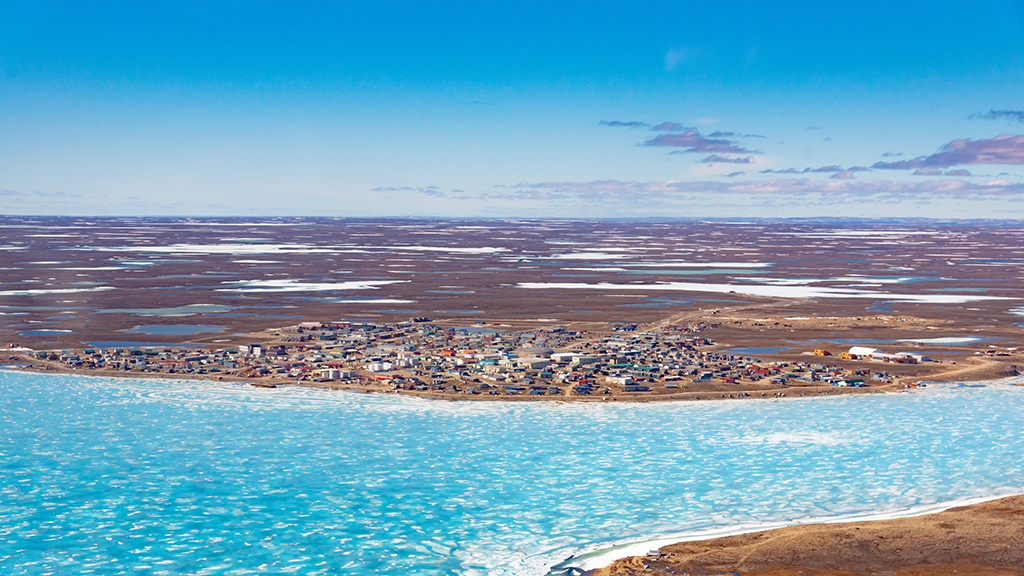A new study has been launched to assess whether geothermal energy could be successfully tapped and waste heat stored to offset reliance on carbon-based energy production in three isolated communities in Nunavut.
If geothermal potential is proven viable, it could help shift the territory’s reliance on diesel fuel to generate electricity for heating, saving communities money and producing renewable energy alternatives that will provide long-term environmental benefits for residents.
Researchers will be doing geophysical surveys to assess deep subsurface conditions in Baker Lake, Cambridge Bay and Resolute Bay. Nunavut, which has 25 communities and a population of 39,000, relies on diesel fuel to power generating stations to supply electricity.
Geothermal is simple and clean technology, constantly being produced from natural heat from the Earth’s core. Any geothermal development would need to occur at or near the communities as there is no infrastructure to support energy transfer and resource temperatures will not support large-scale power production.
The federal government, through the Canadian Northern Economic Development Agency (Can Nor), is investing $1.2 million over three years for the study to help Qulliq Energy Corporation (QEC) work towards a full assessment of Nunavut’s geothermal potential.
QEC is the sole generator and distributor of electrical power in the territory.
The results from the initial assessments will guide preliminary research design and cost estimation for future phases of the project.
“If this current phase of investigation yields viable results, a pilot geothermal storage and district heating system could be in place within five years,” says Renee Boucher, acting manager with Qulliq Energy.
Researchers will be doing geophysical surveys next June around the communities of Cambridge Bay and Resolute Bay. They will be looking for deep rock foundations that could contain extractable heat. At Baker Lake, cores are being extracted and will be sent to universities for study. A borehole temperature monitoring system will be installed to determine rock temperatures over the full depth of a borehole for a year. All three areas have different subsurface geologies that require further exploration.
“Assessment and modelling for geothermal potential have not been completed in the Canadian Arctic, but there is potential for geothermal energy obtained from deep hard rock formations,” explains Boucher. “There is an increased potential for high-grade geothermal energy found in high-Arctic deep-sedimentary basins. Both sources could provide clean and reliable energy potential for the territory.”
The geothermal studies will also allow the corporation to assess the potential of capturing and storing waste heat from the electrical generation process, energy normally expelled to the atmosphere, and modelling how it could be stored in deep rock formations, while minimizing or eliminating effects on permafrost.
Recovery of the energy could occur when it is needed in the colder months and could be distributed to the community through a district heating system.
A significant portion of the current study consists of deep earth geophysical investigations, as well as deep borehole testing and data logging, says Boucher.
“Detailed information is required to seek areas on the Earth’s crust where geothermal energy would most likely be discovered or stored. This involves a considerable amount of work due to the lack of detailed subsurface testing and research within the territory.”
If results are favourable, the next step is to do extensive borehole drilling to locate and quantify the resource, and eventually put together a production geothermal well and conceptual design for a prototype geothermal electrical production facility and storage plant. Qulliq Energy anticipates completion of the full Nunavut geothermal assessment around 2030-2031.
There are several ways geothermal energy could be used. Higher-temperature geothermal energy could turn turbines attached to generators which create electricity. Lower grade geothermal is more difficult to use for electrical production and would require concentrating the heat to turn a turbine that generates electricity. Alternatively, lower-grade geothermal heat could be used solely for district heating before being returned to the Earth.
Waste energy from current diesel electricity generation could also be stored in the Earth for later extraction and use in district heating.
An earlier report prepared for Qulliq Energy indicated there is potential to develop geothermal direct-use, including community heating systems in Nunavut.
Craig Simailak, the minister in Nunavut responsible for Qulliq Energy, says it is incumbent on the corporation to investigate the potential of geothermal energy in the territory.
“Geothermal energy is one of the few environmentally friendly, power generation options with the inherent ability to supply power as reliably and on demand.
“Funding support from our federal partners will allow the corporation to continue seeking sustainable solutions to serve the long-term energy needs of our vast territory, and further reduce the environmental impacts of our current power generation systems.”






Recent Comments
comments for this post are closed